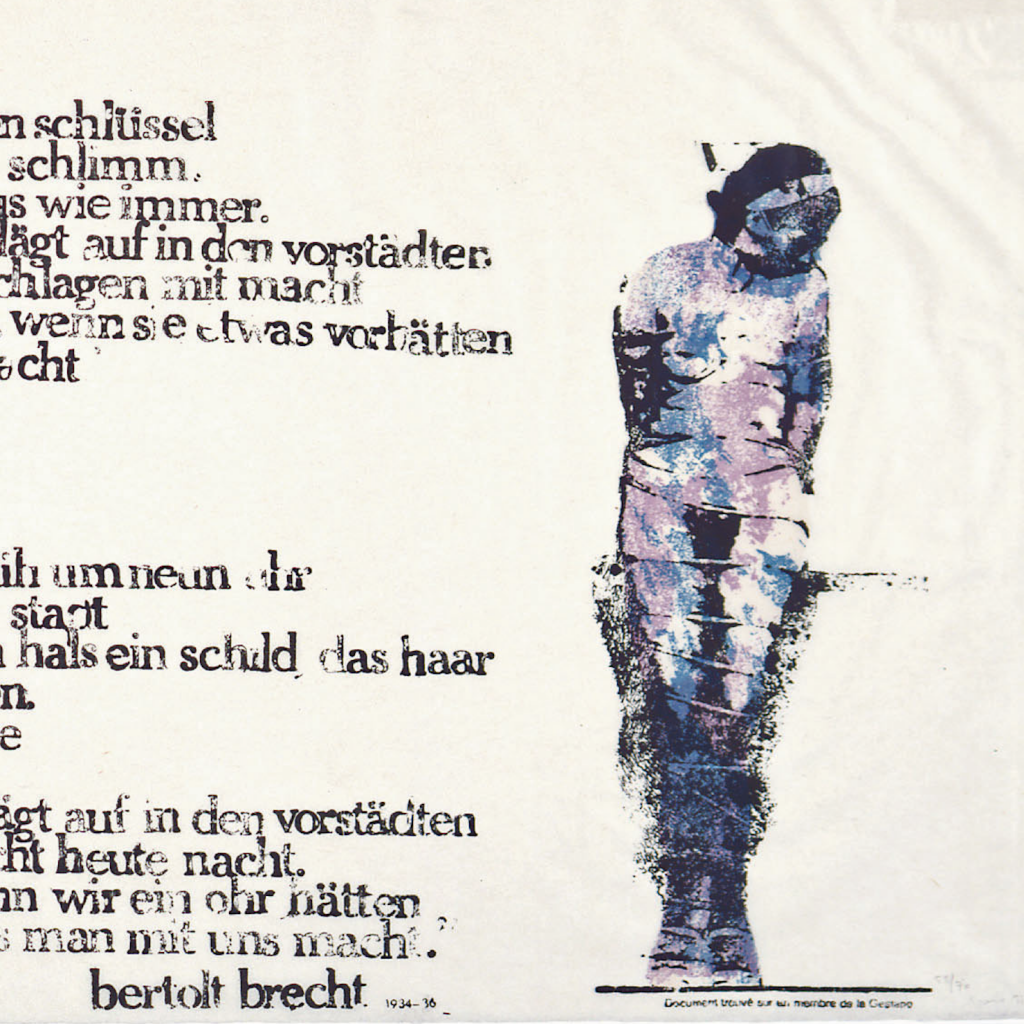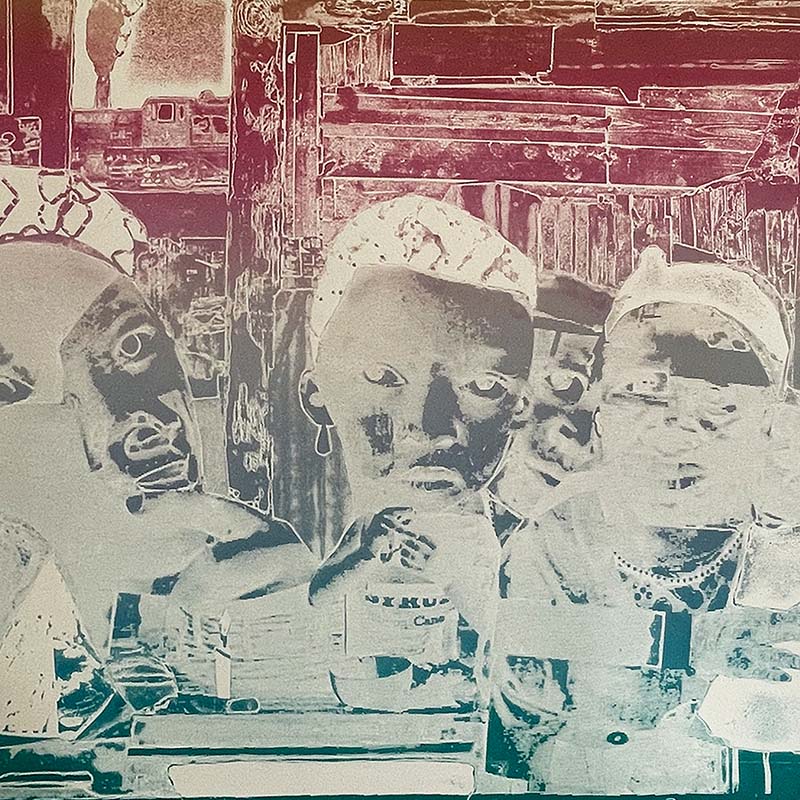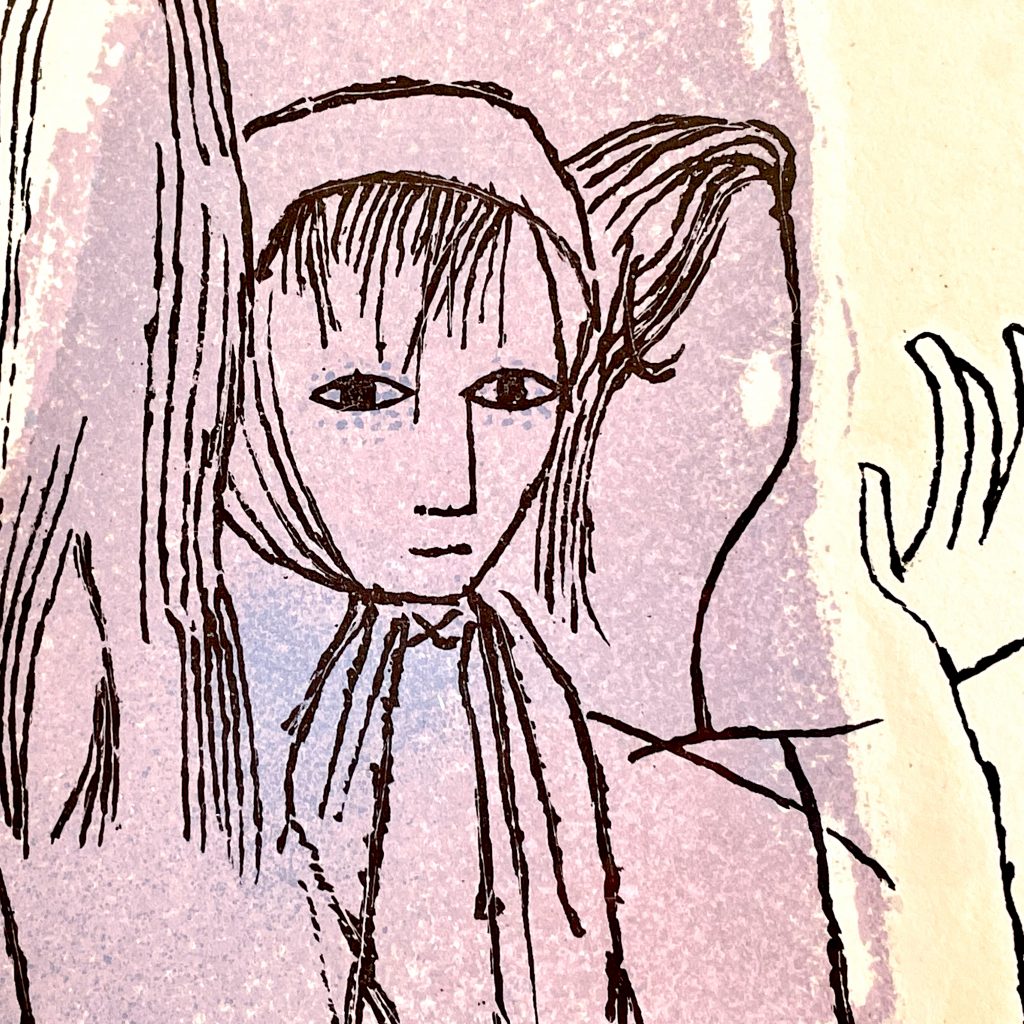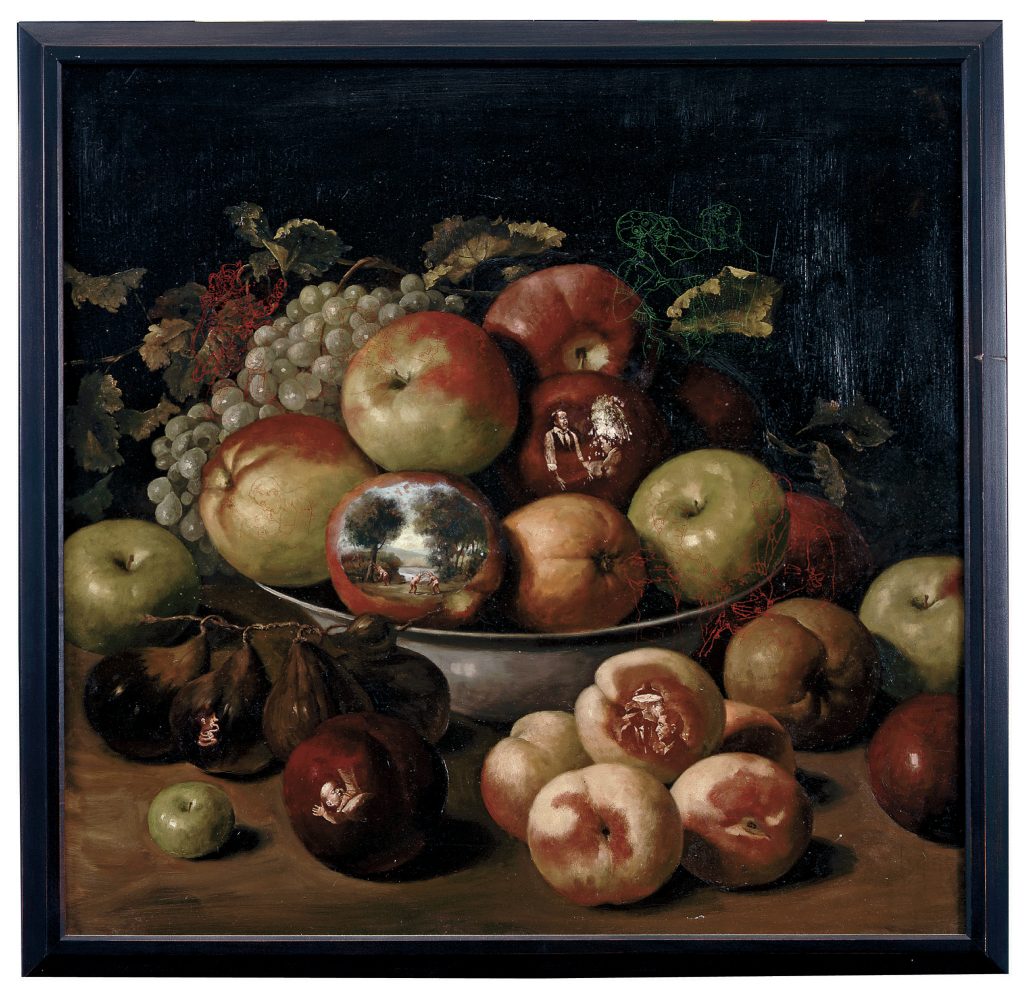Focus Series
The FOCUS series features one artwork per month from the Wake Forest University Art Collections with reflections from students, faculty, staff and alumni.
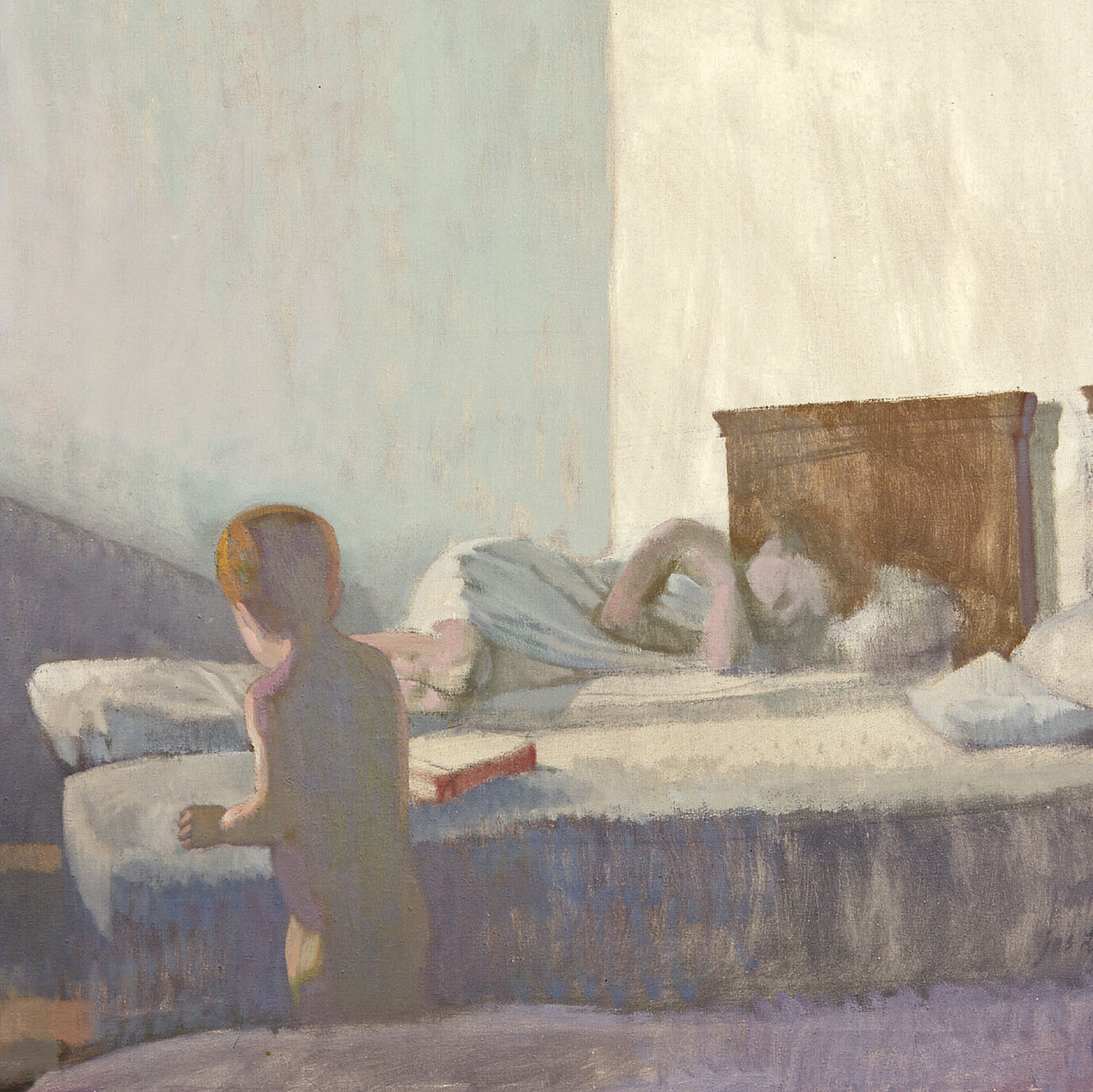
Introspective Moments
In this month’s Focus Series, The Office of University Art Collections presents two works. An oil painting by Joe Lasker and a polymer/tempera painting by Darell Koons.
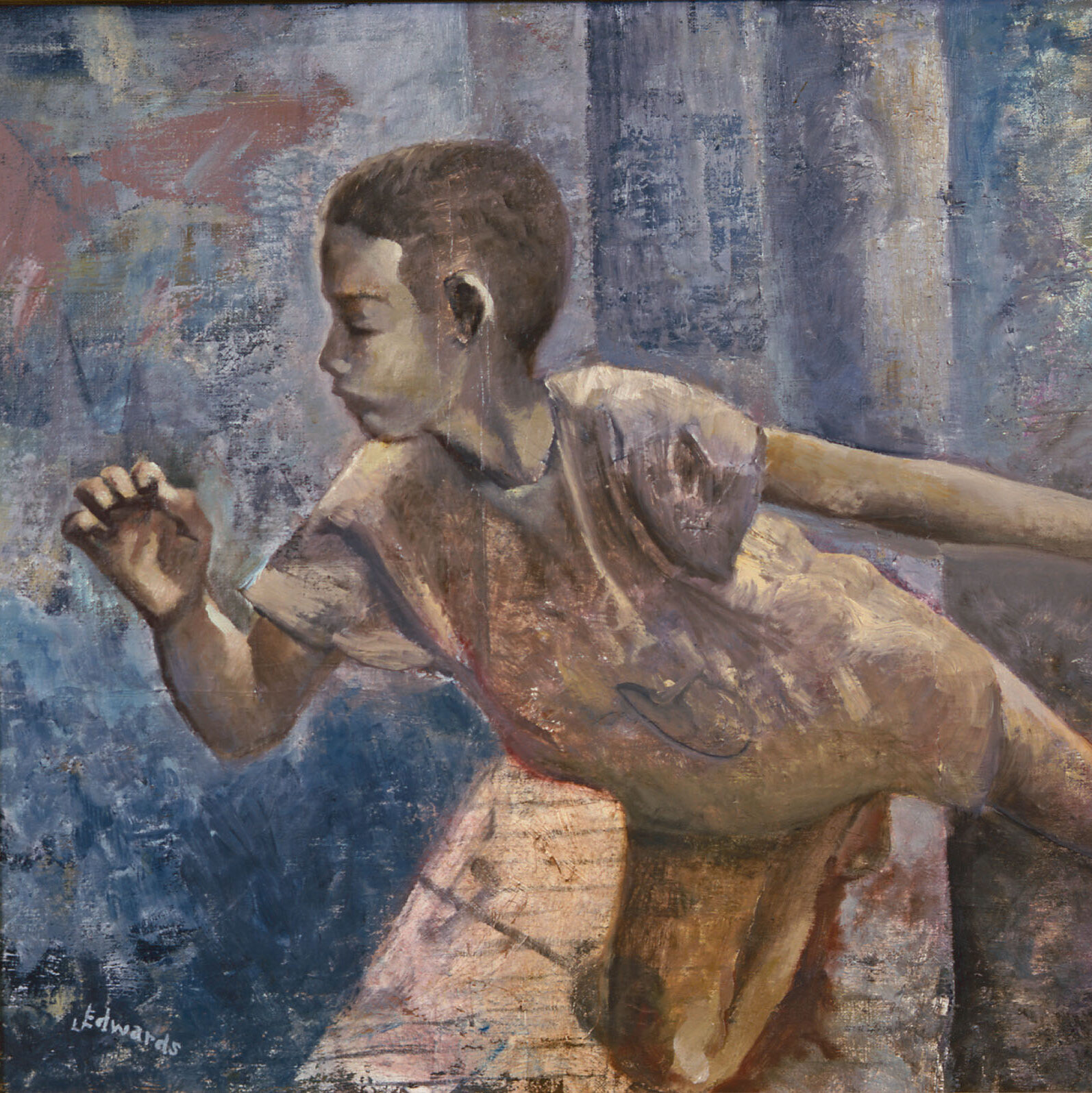
Dream World
James Wilson Edwards was born in Washington DC in 1925, and trained in painting in both New York and Paris. He eventually settled in Princeton, New Jersey, and frequently exhibited work there. He was known for surrealist works that featured Black subjects and displayed messages of contemplation.
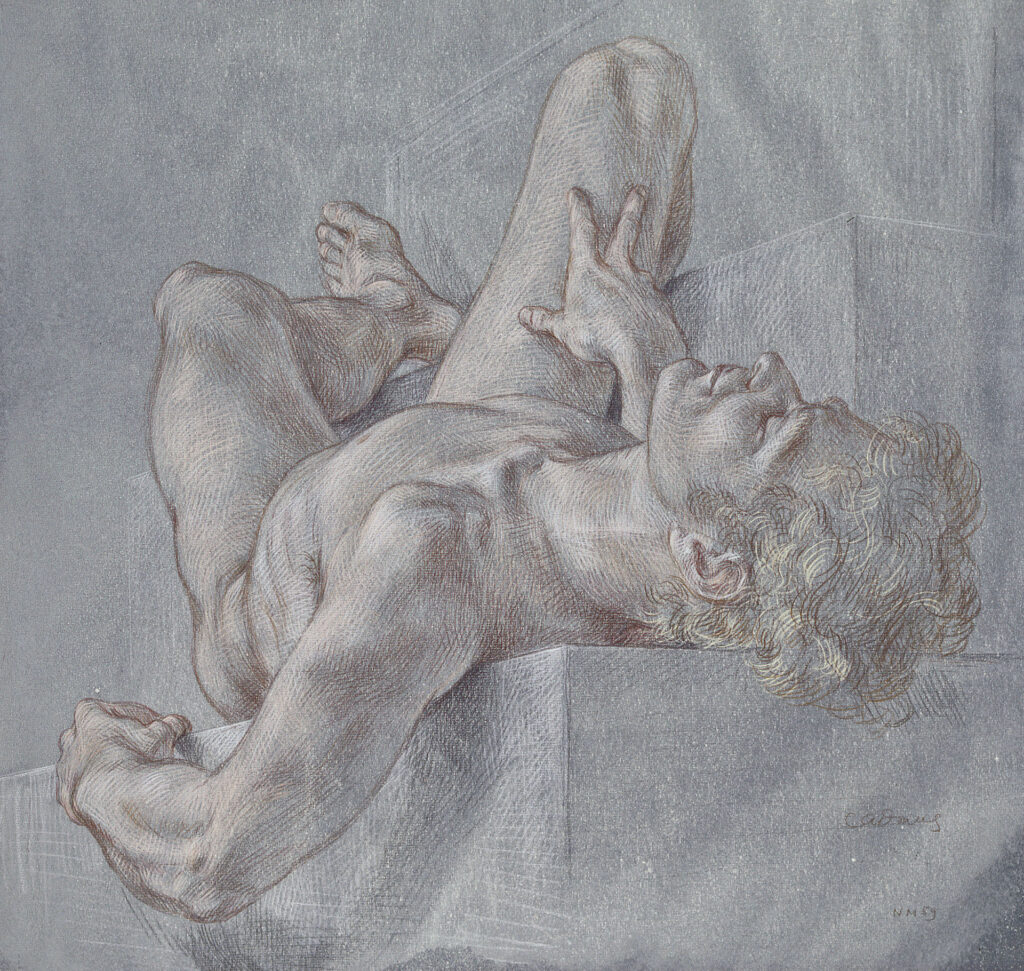
The Human Form
In this month’s Focus Series, The Office of University Art Collections presents two works. An oil painting by Sarah Slappey, Ali II, and a drawing by Paul Cadmus, Male Nude NM 59.
Each artist presents a distinctive approach to depicting the human form, with each artwork holding unique significance for the artists themselves and for our community.
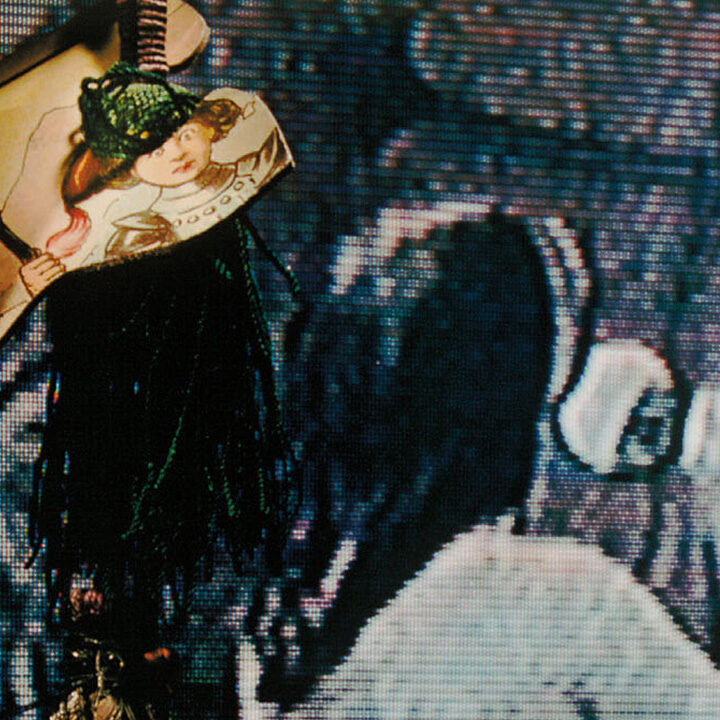
Untitled XXX and Candy
The Office of University Art Collections presents two photographs from the university collection in this month’s FOCUS exhibition: Amy Jenkins’ Untitled XXX, 1990, and Willa Nasatir’s Candy, 2017.
Jenkins’ and Nasatir’s approach to photography is multidisciplinary and their compositions function as part-still life, part-portrait, evoking a surreal otherworldly environment.
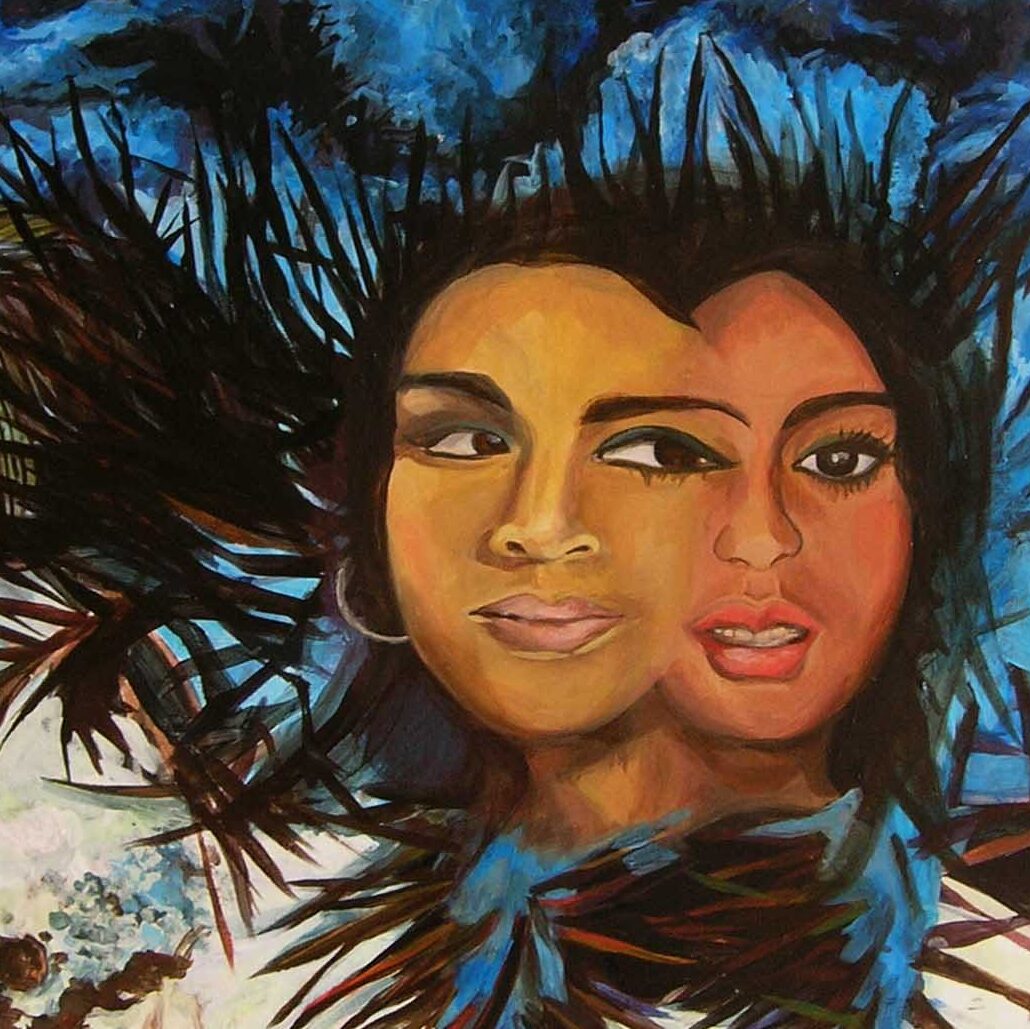
Teri Mehfil, Chitra Ganesh
Chitra Ganesh’s multimedia practice focuses on marginalized figures and narratives from art, history, and literature. In particular, the artist explores the roles and expectations placed on women. Female archetypes—from goddesses to witches—fill her paintings, photographs, sculptures, installations, and comic books. Ganesh mines an array of influences in her work, from contemporary social theory to various world mythologies and Bollywood posters. She filters these influences through an aesthetic that is bold, graphic imagery. Ganesh’s work comments on myth, feminism, sex, and erased colonial histories.
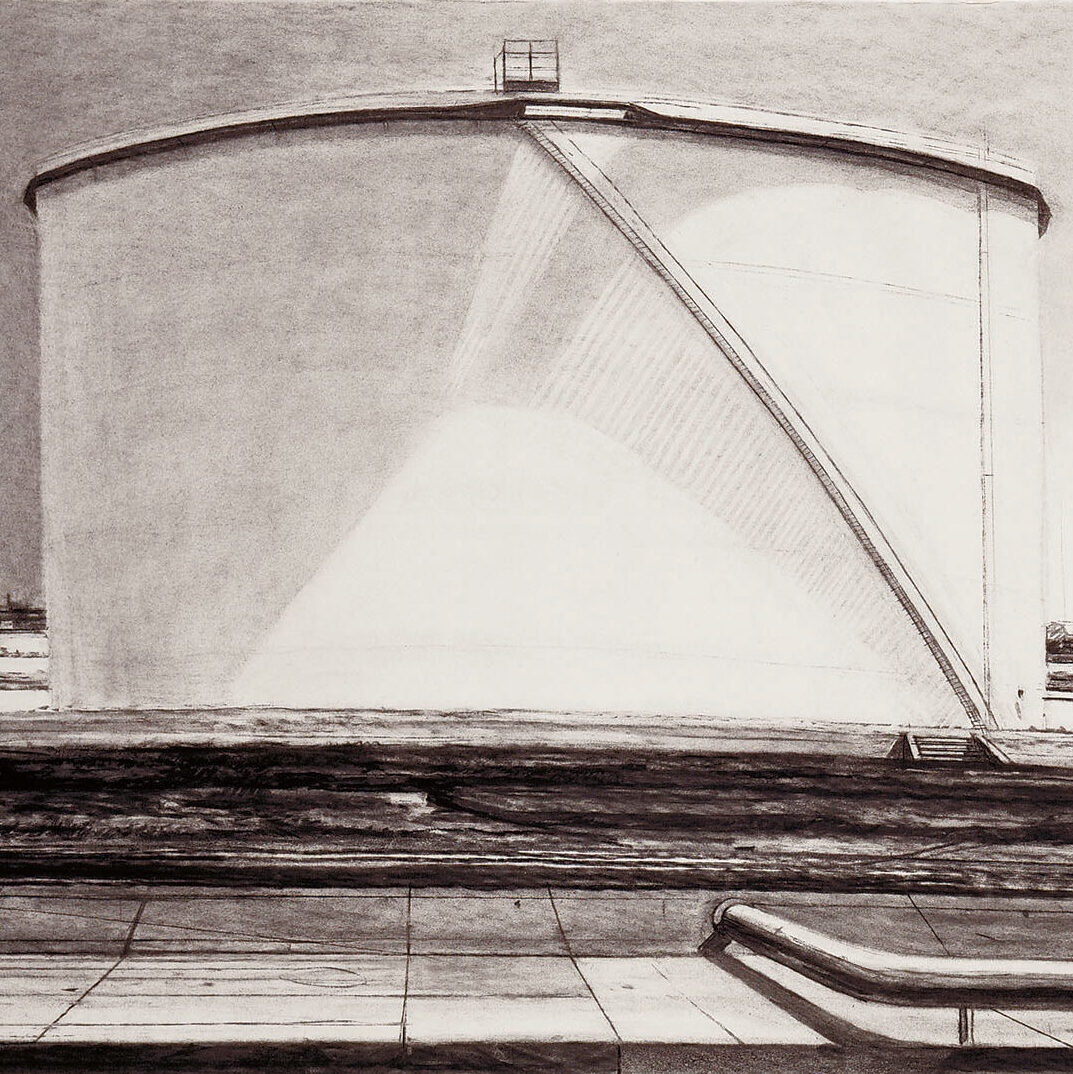
White Gas Tank, Sidney Goodman
The late 1960s was an era marked by triumphs and tragedies that included the civil rights movement, the Vietnam War and antiwar protests, countercultural movements, political assassinations, and the emerging “generation gap.” In 1969, a group of four Wake Forest students traveled to New York City under the supervision of Dean Mark Reece and Provost Ed Wilson to purchase contemporary art for the Mark H. Reece Collection of Student-Acquired Contemporary Art (then known as the College Union Collection). Sidney Goodman’s White Gas Tank was one of 20 artworks acquired on that trip.
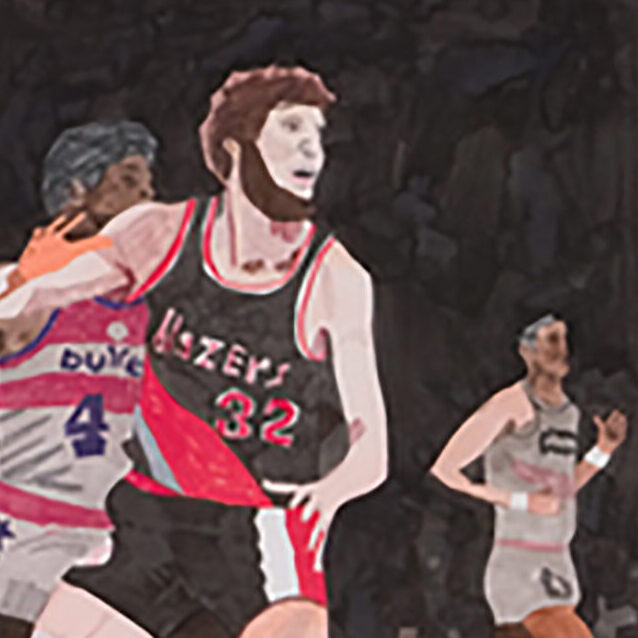
Who’s Playing (In) The Card?
In this work on paper purchased on the 2009 student art buying trip, Jonas Wood uses gouache and colored pencil on paper to depict world-renowned basketball player Bill Walton. Wood emulates the format of a traditional collectable athlete playing card with Walton. By transforming the cheap, mass-produced playing card in his signature graphic style, Wood pays homage to Pop artists who drew inspiration from sources in popular and commercial culture. A self-proclaimed lover of basketball, Wood is surrounded by basketball paraphernalia in his studio and proclaims to listen to basketball podcasts as he creates his art.
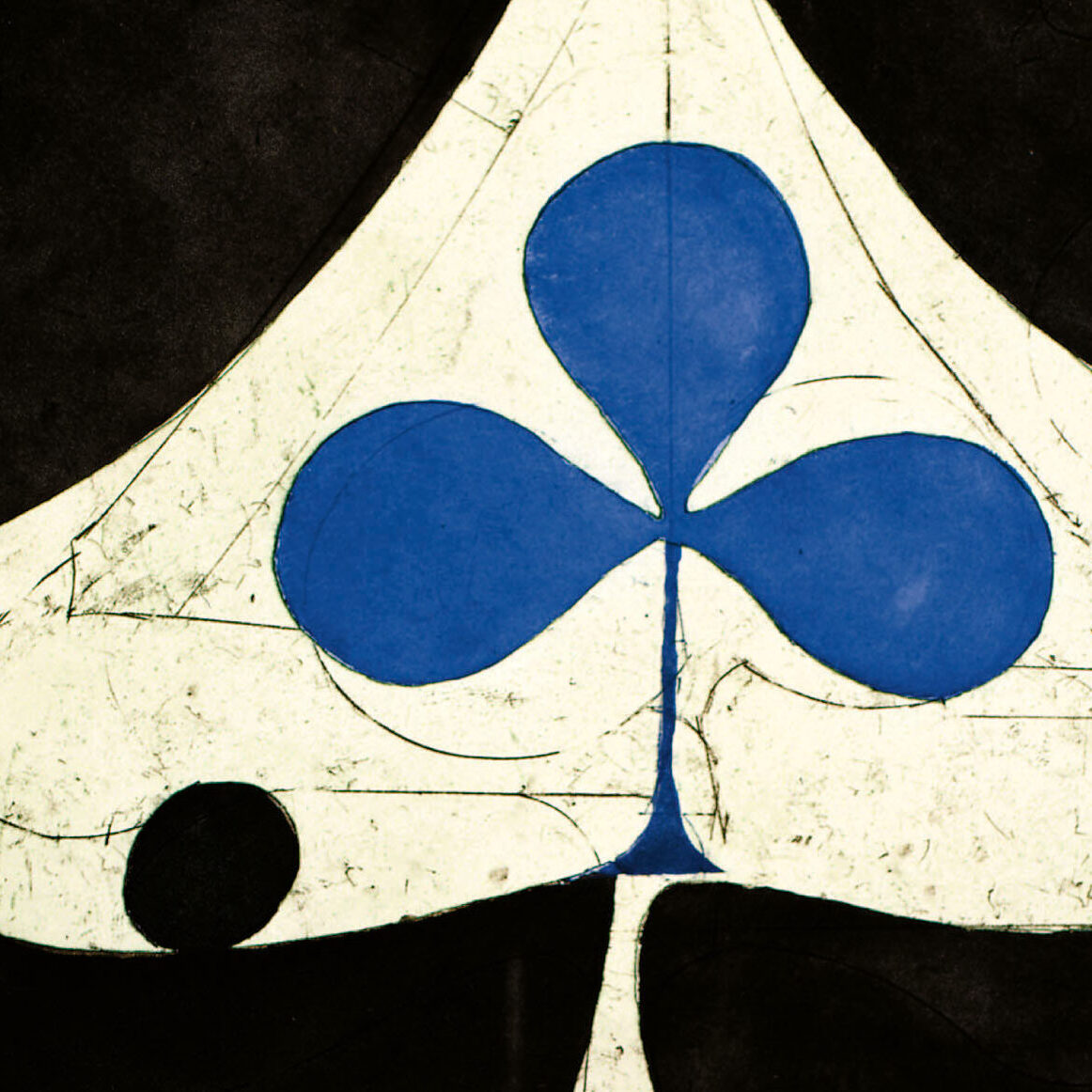
Play the Hand You’re Dealt?
Blue Club by Richard Diebenkorn and Kismet by Caitlyn Margol playfully engage in the dynamics of a card game. Are these cards from the same hand in a game, or are these two cards in a face-off to decide the winner? There is a phrase that is used often when regarding equity: “Play the hand you’re dealt.” Each of these cards are a part of a game, made by rules and systems for the players. Society works in a systematic process, akin to how a card game works. These works of art make us question whether to accept the cards we are dealt, or change the play in the middle of the game.
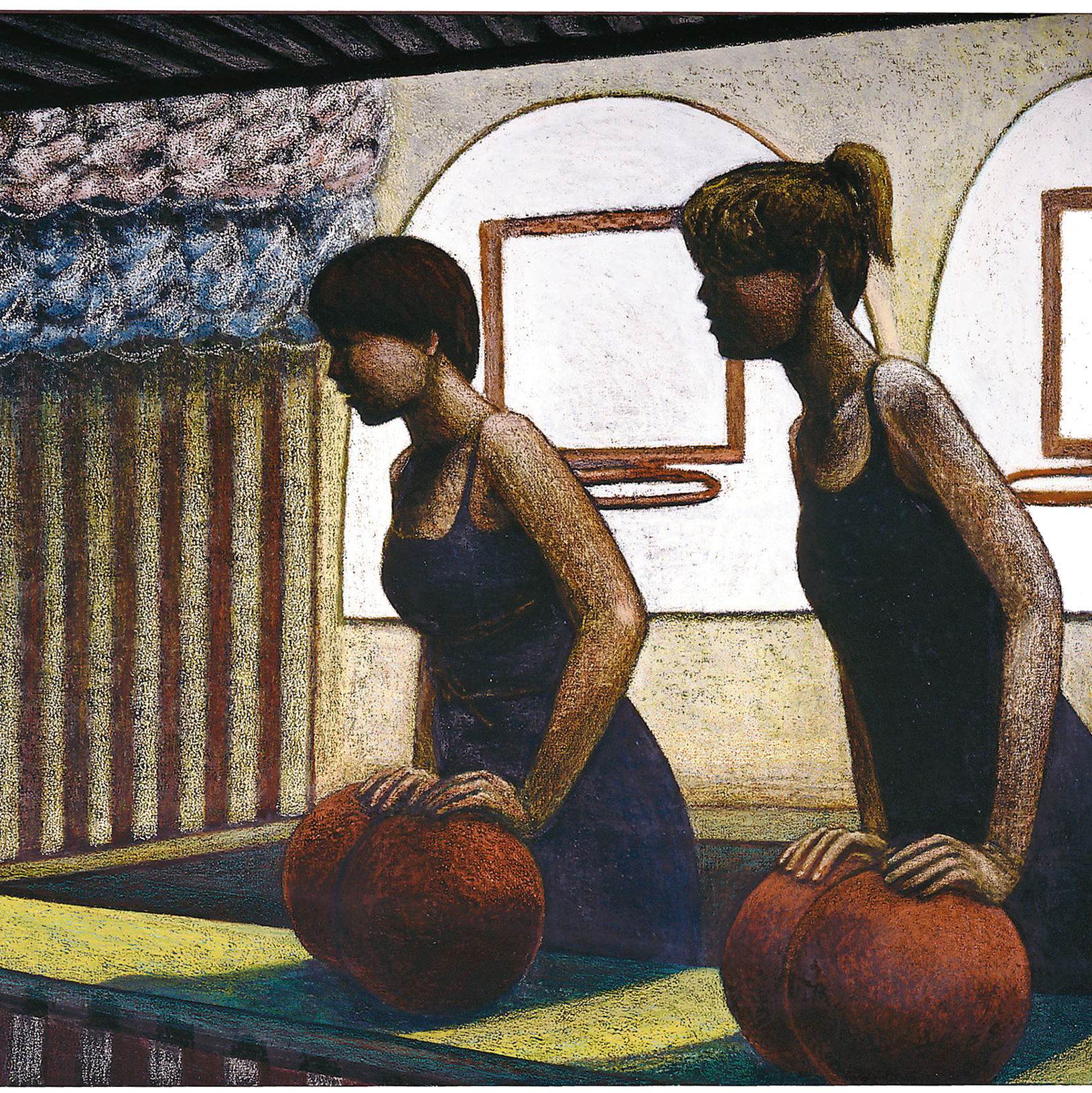
Jane Dickson (American b. 1952), U-Dunk-Em
Jane Dickson describes in her most recent interview for the Whitney Biennale in 2022, “I am a witness for my time, not for heroic moments, but for fresh insights into these small overlooked moments; moments that are lived in the background.” Her artistry, stemming from her photographs, reveals frames of everyday life in the 1980s at the peak of the AIDS crisis, to be a time when the city was “burning, broke, and dangerous.”
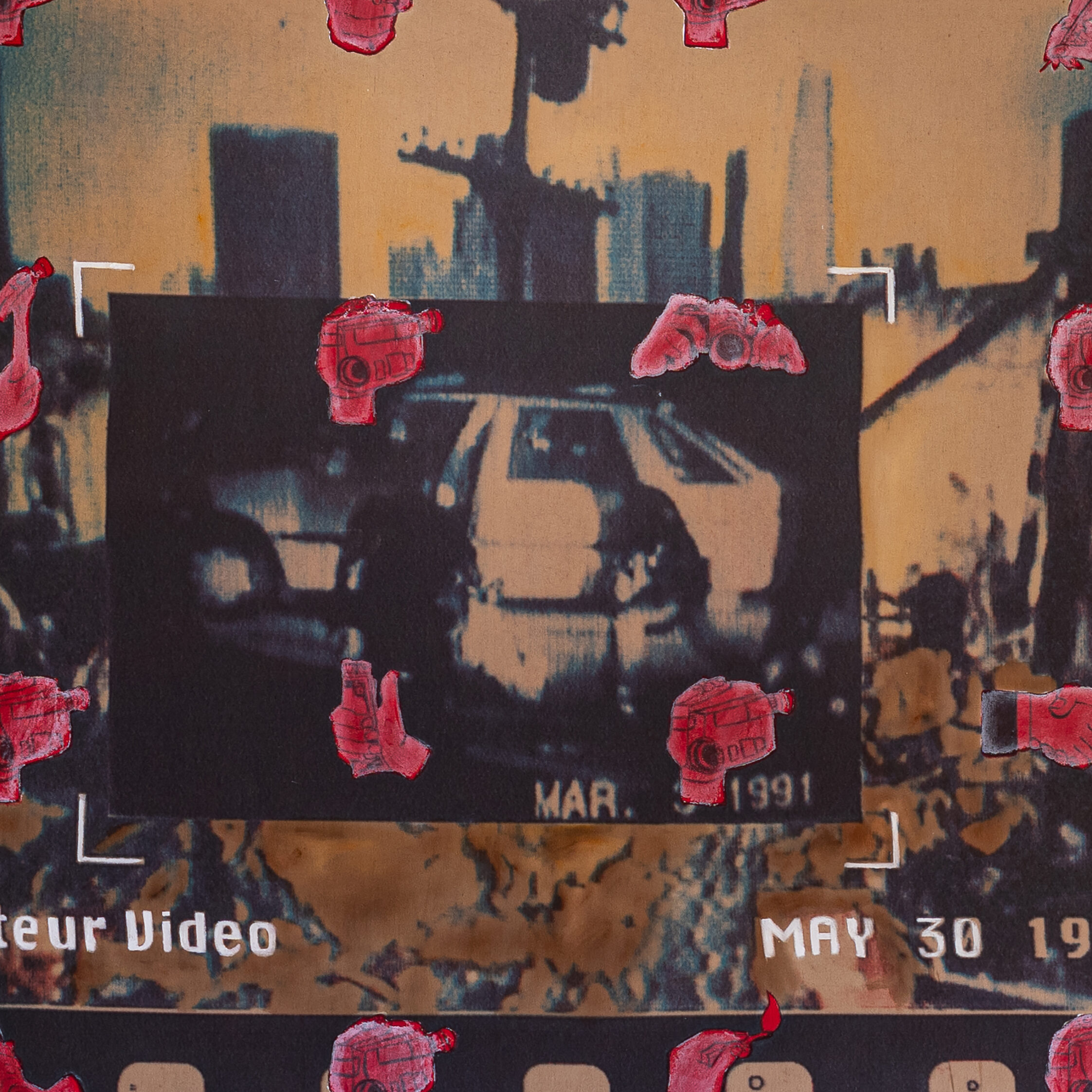
Carter Kustera (American b. 1962), Based on a True Story #12: Mass Hypnosis: Rodney King/L.A. Riot, 1992-1993
This work aligns with themes of criticism and exploitation of media seen with the Pictures Generation Movement, using photography and mixed media to portray how the news media’s power incites violence to the public. Kustera’s work is an appropriation of film and photography stills of the coverage of the brutal beating of Rodney King, an African-American man, by L.A. Police on March 3, 1991.
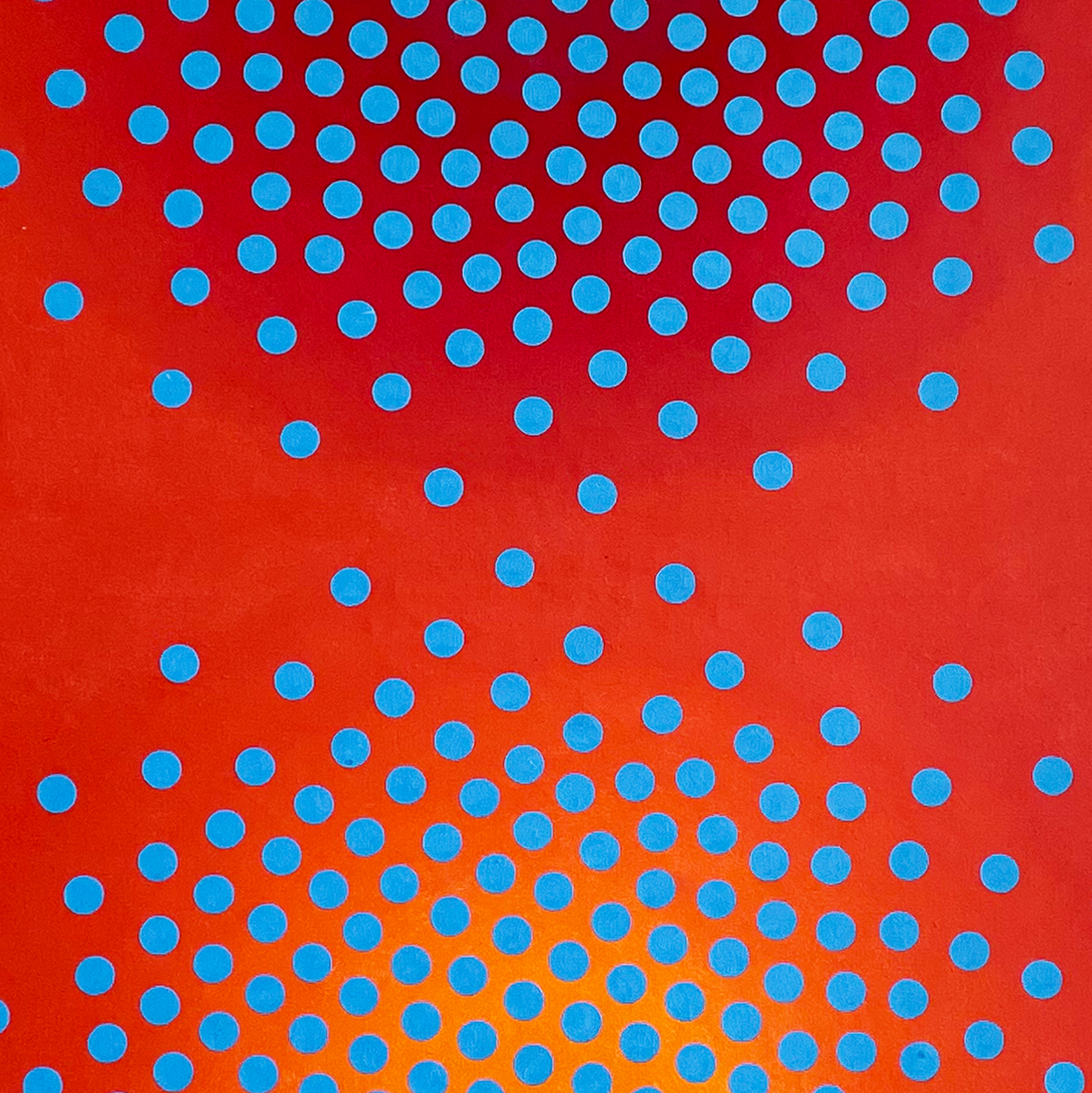
Anne Kesler Shields (American b. 1932-2012), Red and Blue, 1964
Her paintings from the 1960s reflect her interest in the optical effects of color popular with the Op Art movement of that period. Red and Blue is typical of this style in the way that it manipulates the viewer’s perception of color and shape. From the 1950s to the 1970s, Shields observed how trends in painting changed from abstract expressionism to minimalism to realism.
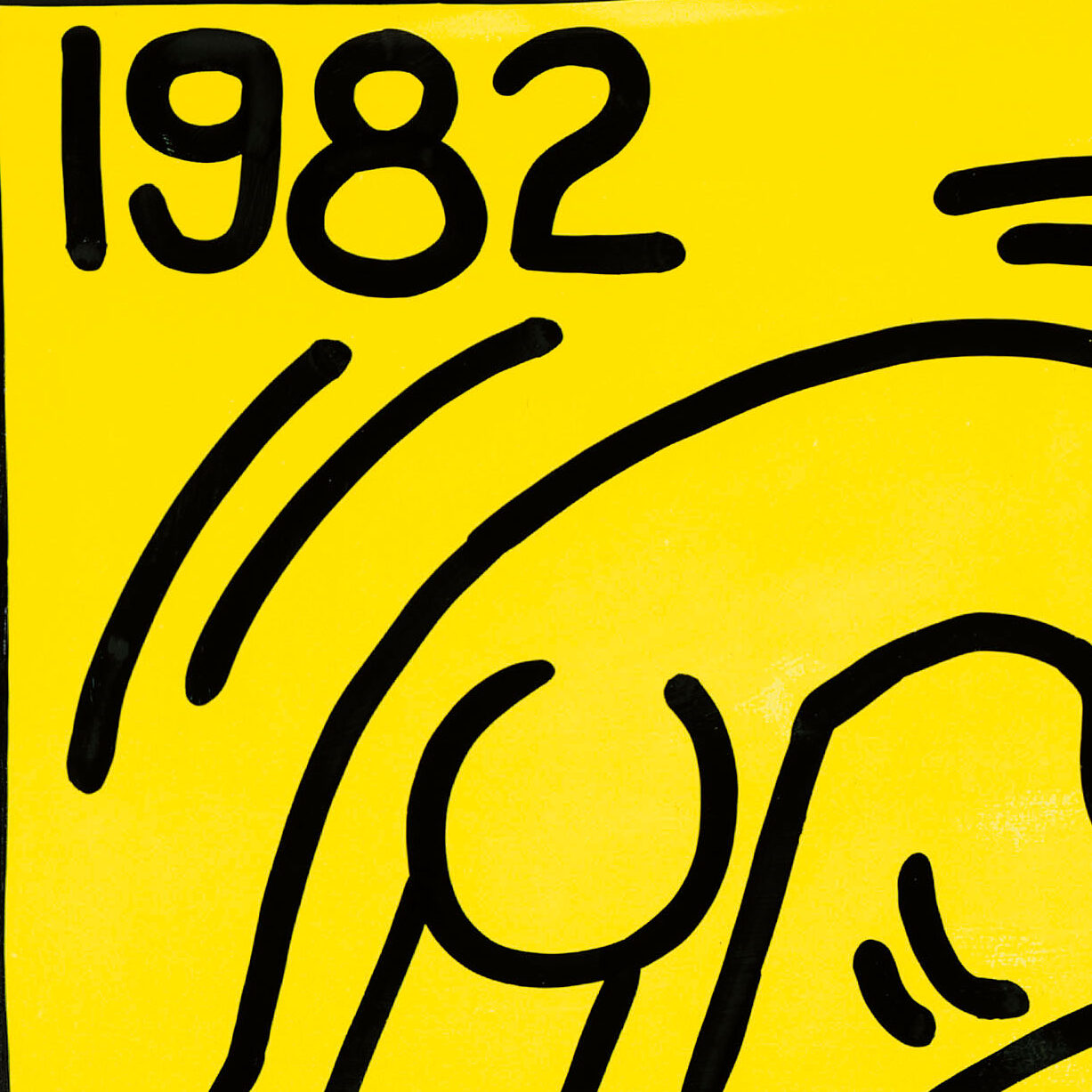
Keith Haring (American b. 1958-1990), Untitled, 1982
Born in 1958, Keith Haring emerged onto the New York art scene in the 1980s, initially composing graffiti art for the underground subways, eager to create socially relevant art accessible to everyone.
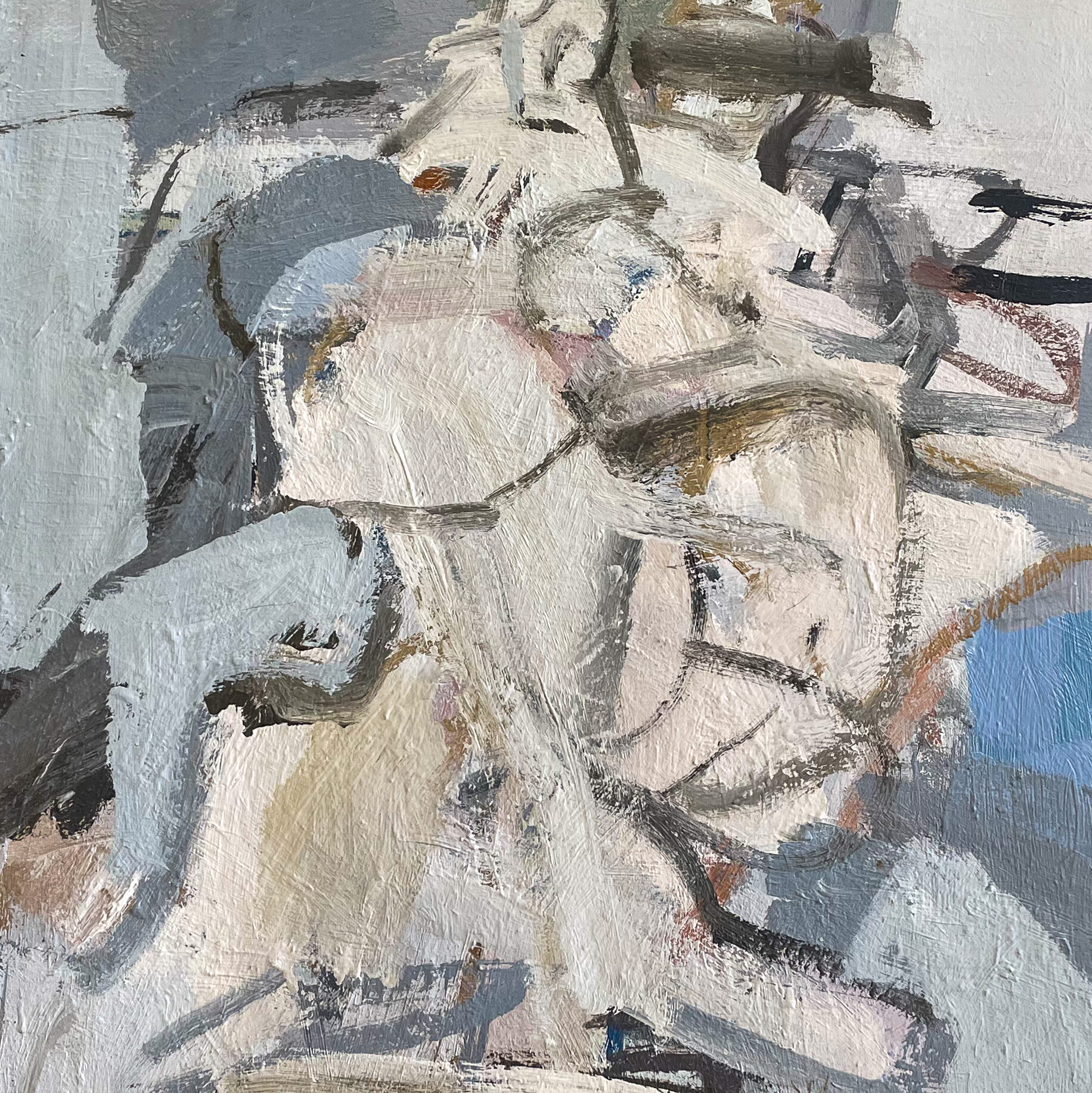
1963 Buying Trip Highlights
featuring works by Charles Cajori, Elaine de Kooning, and George McNeil.
Sixty years ago the Student Union Art Acquisition Committee was formed and planned its first-ever art-buying trip to New York City that would turn Wake Forest into a university with an affluent and ever-growing art collection. We will highlight three works from the 1963 buying trip that these action painters, George McNeil and Charles Cajori, executed with an Ab/Ex style in mind, while the artist Elaine de Kooning incorporated figuration into her piece, a style that she never fully abandoned.
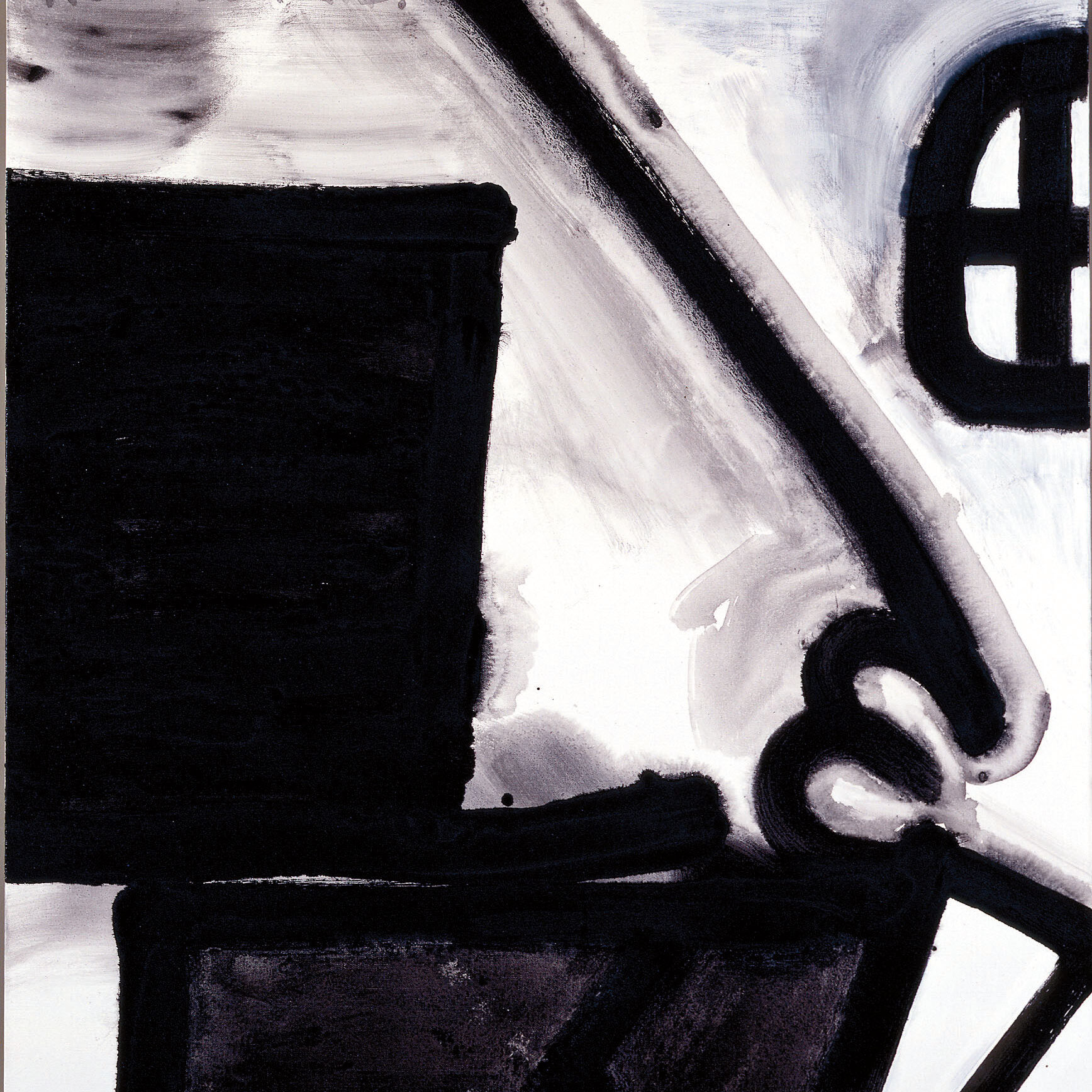
Carroll Dunham (American b. 1949), Hat on Shoulder, 2002
Since the 1980s Carroll Dunham has established himself as a prominent painter in the contemporary art market, currently being represented by major galleries such as Gladstone in New York City. Dunham is known for portraying his subjects with aspects of surrealism, pop, abstract expressionism, and even graffiti to convey sexually and psychologically charged narratives.
Nancy Spero (American b. 1926), Ballade von der Judenhure Marie Sanders, 1991
A lifelong activist and pioneer of feminist art, Nancy Spero devoted her career to unapologetically crafting commentaries on injustices against women and entrenched male dominance in society. Ballade von der Judenhure Marie Sanders exposes brutality against women, which was groundlessly justified by antisemitism throughout Europe. Synthesizing her image with Bertolt Brecht’s poem, “Ballad of Marie Sanders, the Jew’s whore,” Spero details the merciless, public execution of a gentile woman charged with having sex with a Jew.
Romare Bearden (African-American b. 1911), Carolina Memories, 1975
Arguably the nation’s foremost collagist, Romare Beadern epitomizes the Harlem Renaissance and illustrates art’s intersection with the civil rights movement. Born in Charlotte, North Carolina in 1911, Bearden moved to Harlem in 1914 during the Great Migration. A renaissance-man, he held a plethora of positions from Social Services case worker, to semi-professional baseball player, to soldier on World War II’s European front. In the midst of the 1960s civil rights movement, Bearden assisted in the founding of Spiral, a collection of Harlem-based artists.
Ben Shahn (Lithuanian-American b. 1898), For the Sake of a Single Verse, 1968
After his family immigrated from what is now Lithuania in 1906, Ben Shahn (1898-1969) became an apprentice to a lithographer after elementary school and left high school early to pursue a career in lithography and photography, completing his degree by taking classes at night. Shahn was a member of the Social Realist movement, which focussed on portraying the socio-political situations of the working class and the factors behind these conditions.
Julie Heffernan (American b. 1956), Self-Portrait as Explosion, 1996
Artist Julie Heffernan’s style can be described as a contemporary mix of Rococo, Surrealism, and Baroque, with a dash of the seventeenth-century Dutch still-life Masters. The title of each canvas begins with the words Self-Portrait, which conveys that these scenes are portraits of a personal and internal world, not literal depictions of the artist herself.

